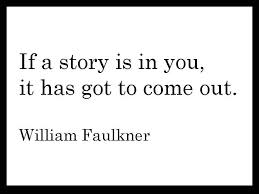
Most of the tips in my previous post for serial writers were picked up from reading and beta reading the works of others. Afterwards, I realized that I’d learned quite a few things that were also worth passing along from writing my own tetralogy. These comprise either things I did that helped the process or I wish I’d known as opposed to figuring out the hard way. So, without further ado, here are a few more tips for those of you working on a story that refuses to end.
1. Read any previous volume(s) to assure consistency. Some details such as the color of a minor character’s hair or eyes can easily be missed, yet picked up by an astute reader. Trying to explain that Edith’s eyes are blue in certain light and green in others is somewhat lame, so it’s best to avoid it by being accurate. If you keep a file on your characters that includes such details it will simplify things later. Quite frankly, I don’t, but believe me, I will next time because it can be time-consuming and a real pain to hunt down later. Of course, while you’re reading, you can note these things, too, which is part of the point.
The best part of rereading the stories that precede you current work is you can usually find some seemingly small details that you can tie in. This is especially true when you’re wrapping everything up at the end. Fans in particular love this sort of thing and it may even drive them to go back and reread the earlier stories as well. Some of them may actually function like an inside joke. If you know anything about fandom you know how dedicated fans thrive on such things.
Assuming you have print copies of your book(s), using sticky notes or page markers works best. If you want to get fancy, you can even color-code them for different types of information. I was amazed and delighted at how some of the seemingly simple details in previous episodes related to the grand finale.
Also note how your style may have changed as your story unfolded, especially if the first one was your debut novel. (See the section in my first “Tips for Serial Writers” blog entitled “First the Worst, Second the Same…” for more on that.)
2. Use flashbacks, albeit brief, to tie in past events from previous books. Important events that ripple over into subsequent volumes should be recapped to refresh the memory of those who read previous works but did so long enough in the past to need reminders. It also puts things in context for new readers who may be reading the episodes out of sequence. These don’t have to be long and drawn out, which will bore your fans, but enough to get them back on track. Prologues can sometimes be used in this way as well.

Flashbacks add depth as well as context.
In some cases, if your serial is complete, readers may start with volume one and blow straight through, especially if it’s a box set, but there’s a good chance that other books may have intervened or perhaps time, dimming their memory. If it’s not yet complete, it’s even more important. If a reader feels lost, it pulls them out of the story and they’re likely to be frustrated, which is one of the last things you want to do. If they wind up scratching their head or digging through previous books to find the event in question, unless they’re madly in love with your story they may toss it aside and pick up something else. Once they stop reading there’s always the chance they won’t be back. Confuse ’em, you lose ’em. Not good.
3. Timing is Everything. Serials are usually sufficiently complex to involve numerous characters who grab the spotlight from time to time and thus the point of view (POV). Keeping the timing correct can be a challenge, especially if coincident scenes are not written in sequence and have to be integrated later. I tend to write a scene when the idea arrives so I have all sorts of things to pull together as I attempt to wrap up a single volume, much less the entire serial. If you maintain a detailed outline, it helps, since you can insert POV excursions accordingly.
Mapping out key events visually is helpful, using project management software the ideal, but often unfamiliar or unavailable. The last thing any author needs is a stiff learning curve on a software package when they’re writing a novel. Using Excel is the next best option, the timeline broken down to suitable increments, whether hours, days, months or years. These go across the top with each column representing a unit of time. Events are listed in the rows below with the proper time element highlighted. You can do this by hand if you prefer; graph paper makes it a little easier.

My first two novels were written on a typewriter that looked a lot like this one.
This can be done out of sequence if that’s how you write, either by inserting a row if everything is in order or organized later based on event timing, which is shown where time marks overlap. Including a column that contains the chapter number right after the first one with the scene description can be used to sort them as well, which also reveals any that need to be adjusted.
I remember seeing a comment from an author one time regarding how difficult it was to keep track of plot action occurring in different time zones. I laughed. My tetralogy involved coordinating events on different planets, spacecraft affected by Einstein’s theory of special and general relativity, and even time travel itself as my story shifted amongst the various characters. Keeping everything in the proper sequence to maintain story continuity was definitely a challenge. Again, Confuse ’em, you lose ’em. Remember that. Not all readers have the patience to read on with literally millions of other books begging to join their TBR list.
4. Insights regarding how your characters have evolved. How a character changes in a story is important, a key element, in fact, to good fiction. In a serial this may be a gradual process, perhaps so much so that the reader doesn’t notice. It doesn’t hurt to remind them using internal dialog on the part of the character(s), as an observation by another character in thought or dialog, or even in the narrative. For example, something as simple as “Before arriving in New York, Patsy was afraid of crowds, but now she navigated 5th Avenue with confidence” does the job.
5. Include the fate of all characters, not just your protagonist. You never know who’ll be a reader’s favorite character. I was surprised how many of my readers favored Thryon, my telepathic walking plant. Thus, you need to make sure everyone’s exit, whenever or however it occurs, provides closure. Don’t simply leave them behind. Characters who ride off into the sunset can also provide fodder for spinoffs.
6. Expect to miss your characters, who by now have become old friends. You may want to consider leaving things open enough at the conclusion to allow for spin-offs. Fully developed characters are just begging for another appearance. You know them as well, maybe even better than your own children or best friend, so if they’ve earned fans along the way, consider using them again. On the other hand, if you’re bored with them, readers may be, too, so this is not something that’s required or should be forced. Back stories are often at least partially written and can be put together for a quick short story that you can use as a giveaway enticement in your marketing efforts. Back stories are also great for holding readers’ interest until the next episode is released if it’s taking you a while to get the next one together.
![Pageflex Persona [document: PRS0000039_00005]](https://my-2-cents-worth.blog/wp-content/uploads/2015/12/thyronnewfront150ppi.jpg?w=224&h=338)
It was fun writing this back story to my tetralogy which kept fans engaged and also served as a hook for new ones.
Fortunately, readers have a variety of preferences as well, whether it’s a quick “beach read” or something they can get their teeth into. Note that back stories can provide fans with both! My next one will be a spin-off from one of my Star Trails characters, which will hopefully prevent it from likewise expanding. But only time will tell.

You certainly hit the nail on the head with these 6. When I wrote Star Bridge, I ignored #5, and was very surprised when several fans independently asked about Tansy and Otter … what had happened to them…. I think I managed to address that sufficiently in a bit of dialogue in Thunder Moon, but since they hadn’t been main characters, I had not thought of doing that in Star Bridge.
LikeLike
I know I would have done the 2nd and 3rd one differently now that I’ve figured these things out. Mainly a few little flashbacks here and there. We learn something with everything we write.
LikeLiked by 1 person
Exactly! After I realized that Star Bridge was not a lone book, I planned Thunder Moon, but was also making notes for Fire Island because I knew that I might need to put things in Thunder Moon that were necessary for Fire Island.
It’s sort of like if you plan to use a weapon in the climax, you need to mention it earlier because you’d destroy the story’s pace if you needed to explain its sudden presence when it was needed.
LikeLike
True. When I read “Fire Island” before “Thunder Moon” I couldn’t figure out who Raine was or how Tem-Aki wound up in the tunnel.
LikeLiked by 1 person
Ah! Hadn’t thought to explain those relationships in depth, since I tend to focus on where the action begins and try to start the story just before chaos strikes.
LikeLike
Which is how you hook the reader, with action. After that’s where flashbacks come in, after the action is resolved.
LikeLiked by 1 person
True. I try to avoid flashbacks, and tend to introduce past action in dialogue. This is partially due to the fact that I try to keep a brisk pace in my books and dialogue is almost as fast a pace as action.
LikeLike
True. Sometimes too much action is overwhelming, though. Characters as well as the reader needs a break occasionally to breathe. They can also work well as the quiet before the storm. Ever notice when things are going really well, in either a novel or movie, that right after that things really heat up? The contrast gives it more impact. My ADHD brain needs a break once in a while. Continuous action and my eyes glaze over, actually.
LikeLiked by 1 person
Valid point.
LikeLike